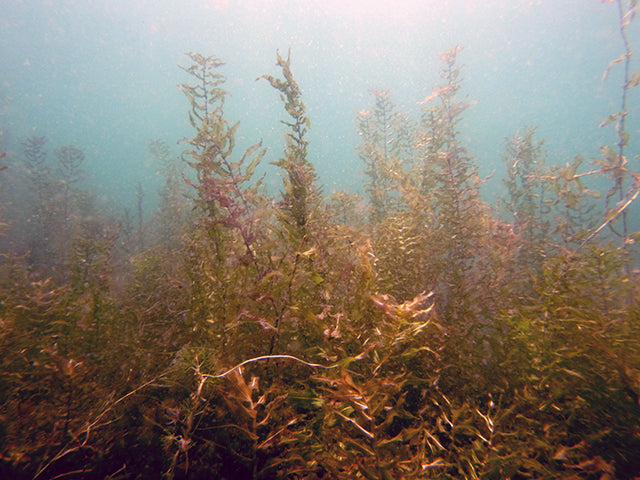CarolKing
Singer of songs and a vapor connoisseur
February 15, 2015

It has been reported that a fisherman has discovered an 'underwater field of marijuana' off the Chilean coast whilst fishing last week. This 'seaweed' has never been seen before in nature.
The fisherman is believed to have been fishing for turbot when he caught unidentified vegetation in his net, which was later identified by marine biologists at the Chilean Aquaculture Centre as a strain of cannabis sativa. The strain has been affectionately named 'Amigo de pescador' by locals, which roughly translates to Fisherman's Friend in English.
Research suggests that a naturally occurring genetic defect in the plant, coupled withsmall hydrothermal vents in the proximity and epipelagic location, have created serendipitous growing conditions that you wouldn't find anywhere in nature and would be difficult to reproduce artificially.
Camila Rojas, a marine biologist, told us this: "It's a very unusual occurrence. I'm assured by my more familiar peers that the levels of THC aren't particularly high but the plants do produce female flowers. Cannabis cultivation in Chile is amongst some of the oldest in the world, so I'm not particularly surprised something like this could happen.
Although Chile has over 4000km (2500 miles) of coastline to take advantage of, I'm not sure the ecosystem at any other point could sustain the growth of this plant like it has on this miraculous occasion."
In 1545 Spaniards introduced the western hemisphere to hemp cultivation by importing cannabis into Chile. As a strong naval power at the time, the Spanish were keen to grow as much hemp as possible to avoid reliance on foreign merchants, which resulted in large scales farming operations across Chile.
It unclear what the fate of the treasure trove of 'seaweed' will be, but the Chilean authorities have allowed for select individuals to conduct further research on the plant to see if it has any medicinal applications. The Latin American state is very interested in medical marijuana, last October it authorised the growth of 850 plants in a residential area of La Florida to be used by over 200 patients.

It has been reported that a fisherman has discovered an 'underwater field of marijuana' off the Chilean coast whilst fishing last week. This 'seaweed' has never been seen before in nature.
The fisherman is believed to have been fishing for turbot when he caught unidentified vegetation in his net, which was later identified by marine biologists at the Chilean Aquaculture Centre as a strain of cannabis sativa. The strain has been affectionately named 'Amigo de pescador' by locals, which roughly translates to Fisherman's Friend in English.
Research suggests that a naturally occurring genetic defect in the plant, coupled withsmall hydrothermal vents in the proximity and epipelagic location, have created serendipitous growing conditions that you wouldn't find anywhere in nature and would be difficult to reproduce artificially.
Camila Rojas, a marine biologist, told us this: "It's a very unusual occurrence. I'm assured by my more familiar peers that the levels of THC aren't particularly high but the plants do produce female flowers. Cannabis cultivation in Chile is amongst some of the oldest in the world, so I'm not particularly surprised something like this could happen.
Although Chile has over 4000km (2500 miles) of coastline to take advantage of, I'm not sure the ecosystem at any other point could sustain the growth of this plant like it has on this miraculous occasion."
In 1545 Spaniards introduced the western hemisphere to hemp cultivation by importing cannabis into Chile. As a strong naval power at the time, the Spanish were keen to grow as much hemp as possible to avoid reliance on foreign merchants, which resulted in large scales farming operations across Chile.
It unclear what the fate of the treasure trove of 'seaweed' will be, but the Chilean authorities have allowed for select individuals to conduct further research on the plant to see if it has any medicinal applications. The Latin American state is very interested in medical marijuana, last October it authorised the growth of 850 plants in a residential area of La Florida to be used by over 200 patients.

 !
!

